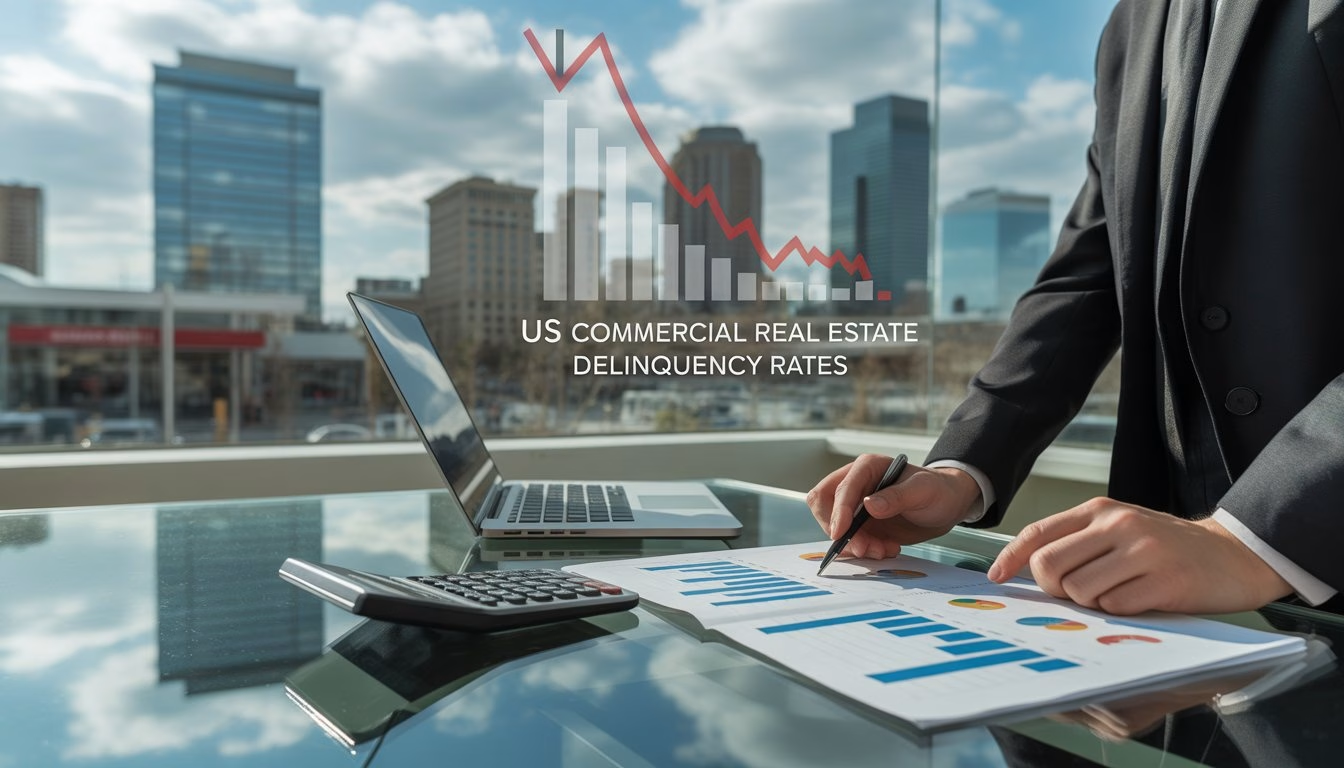The commercial real estate landscape is poised for a significant shift in 2025, with an unprecedented number of lease expirations on the horizon. Over 265 million square feet of commercial real estate leases across various property types are set to mature in 2025, presenting both challenges and opportunities for investors, landlords, and tenants alike.
This impending wave of expirations is particularly pronounced in the office and industrial sectors. For office spaces, the situation is compounded by record-high vacancy rates, with approximately 217 million square feet of leases expiring in 2024 and 2025. This convergence of factors could reshape the commercial real estate market in profound ways.
As you navigate this changing landscape, understanding the implications of these lease expirations is crucial. Whether you’re an investor looking to capitalize on emerging opportunities or a tenant preparing to renegotiate terms, the decisions made in the lead-up to 2025 could have far-reaching consequences for your commercial real estate strategy.
Key Takeaways
- Over 265 million square feet of commercial real estate leases are expiring in 2025
- Office and industrial sectors face the most significant lease turnover
- Stakeholders must prepare strategies to navigate the changing CRE pricing resets
The Scale Of Commercial Real Estate Lease Expirations In 2025

Commercial real estate is facing a significant milestone in 2025. Over 265 million square feet of leases are set to expire across various property types. This massive scale of lease expirations will likely reshape the industry landscape.
The expiring leases span different sectors of commercial real estate:
- Industrial: Largest share of expiring leases
- Office: Second-largest portion
- Retail: Smaller but still substantial amount
You’ll find that industrial properties are particularly affected. Many companies may reassess their space needs as e-commerce trends evolve.
Office lease expirations present both challenges and opportunities. Between 8 million and 42 million square feet of office space could become available for renegotiation. This opens doors for tenants to secure more favorable terms.
Retail spaces will also see changes as consumer behaviors continue to shift. Brands may reconsider their physical footprints in light of online shopping trends.
These lease expirations will impact property owners, tenants, and investors alike. You’ll need to closely monitor market conditions and prepare for potential shifts in property values and occupancy rates.
Industrial Sector Outlook
The industrial sector is poised for significant activity in 2025, with over 265 million square feet of commercial real estate leases expiring. This presents both challenges and opportunities for property owners and investors.
Industrial properties, including warehouses and distribution centers, are expected to have the largest share of expiring leases. This trend reflects the sector’s robust growth in recent years, driven by e-commerce expansion and supply chain reconfigurations.
You can anticipate continued demand for industrial space in 2025. Third-party logistics providers (3PLs) are projected to maintain a significant presence, accounting for approximately 35% of overall industrial leasing activity.
For landlords, this environment offers potential opportunities:
• Renegotiate leases at higher rates • Attract new tenants seeking modern facilities • Implement sustainability upgrades to meet evolving tenant demands
Market dynamics may vary by location. You should consider factors such as:
- Proximity to major transportation hubs
- Local economic conditions
- Technological infrastructure
Keep in mind that outsourcing trends are likely to support ongoing demand for industrial space. This could provide stability in the face of broader economic uncertainties.
Office Sector Challenges And Opportunities
The office sector faces significant challenges in 2025 due to lease expirations of over 265 million square feet. This presents both risks and opportunities for landlords and tenants.
Remote work trends continue to impact office demand. Many companies are downsizing their office footprint as leases come up for renewal. You may see some high-profile cases of non-renewals or significant space reductions.
However, certain industries still value in-person collaboration. Financial services, technology, and law firms are expected to drive office leasing activity in 2025. This could help offset some of the vacancy increases.
Negotiation strategies will be crucial:
- For tenants: Leverage high vacancy rates to secure favorable terms
- For landlords: Offer flexible lease structures and amenities to attract/retain tenants
Office property owners face tough decisions. Some may need to consider:
- Repurposing underutilized space
- Investing in upgrades to compete for quality tenants
- Selling properties that no longer meet market demands
Office delinquency rates are projected to exceed 14% by 2026. This underscores the ongoing challenges in the sector.
Despite the headwinds, opportunities exist for well-positioned assets. Prime locations and modernized buildings may still attract tenants seeking high-quality office environments.
Geographical Considerations
The impact of commercial real estate lease expirations in 2025 varies significantly across different regions and metropolitan areas in the United States. You’ll find notable differences in how these expirations affect various markets.
New York MSA faces substantial challenges with a high volume of office lease expirations. The city’s dense business districts and concentration of corporate headquarters make it particularly vulnerable to shifting workplace trends.
In Chicago, you’ll observe a mix of opportunities and risks. The city’s diverse economic base may help cushion the impact, but certain submarkets could experience higher vacancy rates.
Philadelphia’s market shows resilience, with a balanced mix of industries potentially mitigating the effects of lease expirations. You’ll find that some areas of the city may fare better than others.
San Francisco and Los Angeles present unique scenarios:
- San Francisco: Tech-heavy focus may lead to more significant impacts
- Los Angeles: Diverse economy could provide some stability
Geographic location plays a crucial role in determining the severity of lease expiration effects. Coastal cities often face different challenges compared to inland markets.
Top metropolitan areas affected by office lease expirations:
- New York
- San Francisco
- Chicago
- Los Angeles
- Philadelphia
These cities are experiencing varying degrees of impact due to factors such as local economic conditions, industry concentrations, and new construction activity.
Implications For Different Stakeholders

Property owners and managers face significant challenges as over 265 million square feet of commercial real estate leases expire in 2025. You’ll need to prepare for potential vacancies and negotiate new terms with tenants.
Investors and lenders should be aware of the increased risk in commercial mortgage-backed securities (CMBS), especially for office properties. Your cash flow projections may need adjustment due to potential changes in occupancy and rental rates.
Brokers and market analysts, you’ll play a crucial role in navigating this changing landscape. Your expertise will be valuable in assessing market trends and advising clients on lease negotiations.
Key factors to consider for all stakeholders:
- Interest rates and economic uncertainty
- Shifting tenant preferences
- Labor market dynamics
- Potential for distressed properties
Office properties may see a 48% reduction in leased space, impacting CMBS office loans and collateral values. You’ll need to closely monitor these trends and adjust strategies accordingly.
The 2025 lease expirations present both challenges and opportunities. Tenants may seek to renegotiate terms, while property owners could explore ways to adapt spaces to meet evolving market demands.
Stay informed about energy efficiency and renewable power solutions as these factors may influence tenant decisions and property values in the coming years.
Preparing For 2025: Actionable Strategies
As 2025 approaches, commercial real estate stakeholders must prepare for the impending wave of lease expirations. You need to develop proactive strategies to navigate this pivotal year.
For landlords, focus on tenant retention. Conduct early discussions with current tenants about their future space needs. Consider offering flexible workspace options to accommodate changing requirements.
Optimize your properties to remain competitive. Implement energy-efficient upgrades and smart building technologies. This can help attract and retain tenants while potentially increasing property values.
Tenants, evaluate your space needs thoroughly. Assess how remote work policies have impacted your office requirements. Consider downsizing or relocating if necessary.
Strengthen your negotiating power by researching market rates and trends. Be prepared to explore alternative locations if current terms aren’t favorable.
Investors should conduct careful risk assessments of potential acquisitions. Pay attention to lease expiration dates and tenant financial health. Look for properties with staggered expiration dates to mitigate risk.
Identify opportunities in emerging sectors like life sciences or data centers. These areas may offer more stability and growth potential.
Embrace technology to streamline operations and enhance decision-making. Utilize data analytics to forecast market trends and optimize your real estate strategies.
Consider sustainability initiatives as part of your long-term planning. Green buildings are increasingly attractive to tenants and can provide cost savings over time.
By implementing these strategies, you’ll be better positioned to navigate the challenges and opportunities presented by the 2025 lease expiration landscape.
Frequently Asked Questions
Commercial real estate lease expirations in 2025 present significant opportunities and challenges for both tenants and landlords. Market dynamics are shifting, requiring strategic planning and adaptation from all parties involved.
What are the implications of commercial real estate lease expirations in 2025 for tenants?
Tenants face a unique opportunity to renegotiate lease terms and potentially reduce their office space. With over 265 million square feet of leases expiring, you can leverage market conditions to secure more favorable agreements.
This massive reset in lease agreements allows you to reassess your space needs and negotiate for better rates or improved amenities.
How can landlords best manage their properties during the high volume of expirations expected in 2025?
Landlords must be proactive in retaining tenants and attracting new ones. You should focus on property improvements, flexible lease terms, and enhanced amenities to remain competitive.
Consider offering shorter lease durations or options for space adjustments to accommodate changing tenant needs. Maintaining open communication with current tenants can help you anticipate and address their concerns.
What strategies should businesses employ when their commercial leases expire in 2025?
Start planning early and assess your space requirements carefully. You may benefit from renegotiating lease terms or exploring alternative locations that better suit your evolving needs.
Consider hybrid work models and their impact on your space requirements. Engage professional advisors to help navigate the complex lease renewal process and market conditions.
Are there particular market trends influencing commercial lease durations as we approach 2025?
Shorter lease terms are becoming more common as businesses seek flexibility. You’ll notice an increase in options for expansion or contraction within lease agreements.
The rise of co-working spaces and shared offices is influencing traditional lease structures. Landlords are adapting by offering more customizable spaces and terms to attract and retain tenants.
How will the commercial real estate landscape change post-2025 lease expirations?
Expect a shift towards more flexible and technologically advanced office spaces. You’ll likely see increased vacancy rates in older, less adaptable buildings.
The market may experience a period of repricing as supply and demand dynamics adjust. This could lead to more favorable terms for tenants in some areas.
What legal considerations should be taken into account during the renewal process of leases expiring in 2025?
Pay close attention to termination clauses, renewal options, and rent escalation terms. You should review sublease and assignment rights to ensure flexibility for future needs.
Consider including force majeure clauses that address potential disruptions. Engage legal counsel to review and negotiate lease terms, ensuring your interests are protected in the evolving market landscape.
Want to know if that deal is actually worth pursuing?
Stop relying on outdated spreadsheets – analyze your next real estate deal like a pro with DealCheck. Start your free analysis today!

Dive deep into the world of real estate investment with this comprehensive case study that brings theory to life.
Investment Real Estate Analysis: A Case Study offers an unparalleled look at the decision-making process behind successful property investments. Follow along as we dissect a real-world scenario, revealing the critical factors that seasoned investors consider before making a move.
From crunching numbers to assessing market conditions, this book walks you through every step of the analysis process. Learn how to evaluate potential investments like a pro, understanding key metrics such as cap rates, cash-on-cash returns, and internal rate of return.
Whether you’re a novice investor or looking to refine your skills, this case study will equip you with the tools to make informed investment decisions in the competitive real estate market.
Get your copy now from your favorite bookseller:
- Amazon
- Books2Read for Apple, Barnes & Noble, Kobo, Scribed, and 8 more sellers with both eBook and paperback options available
- Payhip as a downloadable PDF
Ready to move to the next level?
- Visit our learning center
- Learn more about our consulting services
This blog post was written by J. Scott Digital content creation services.



